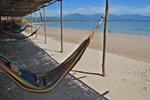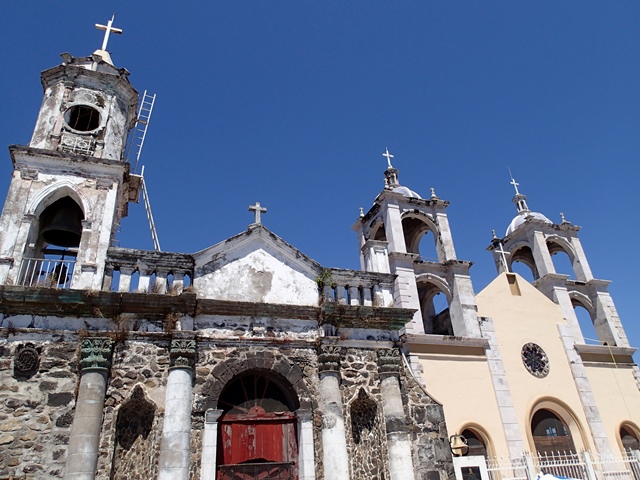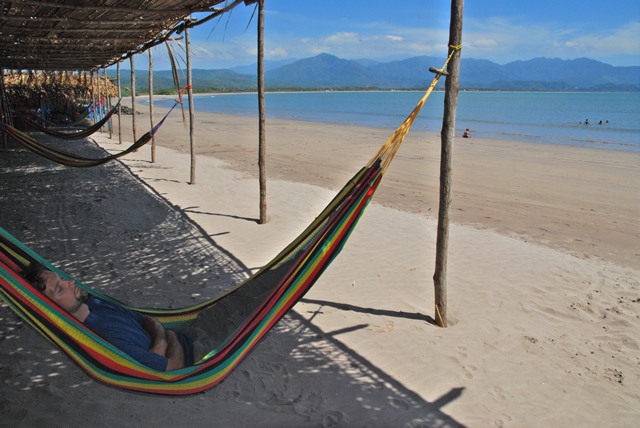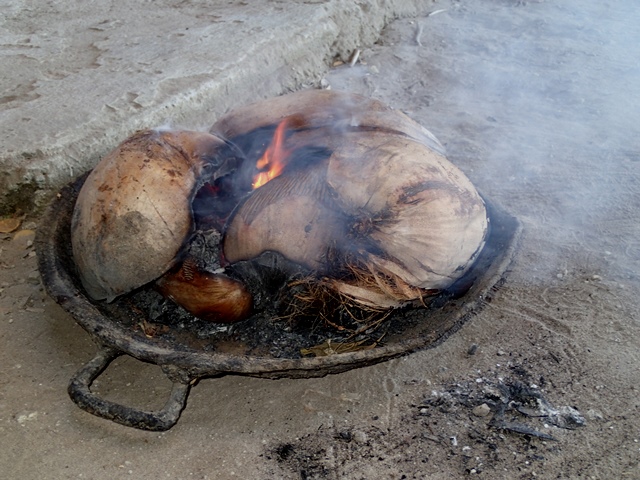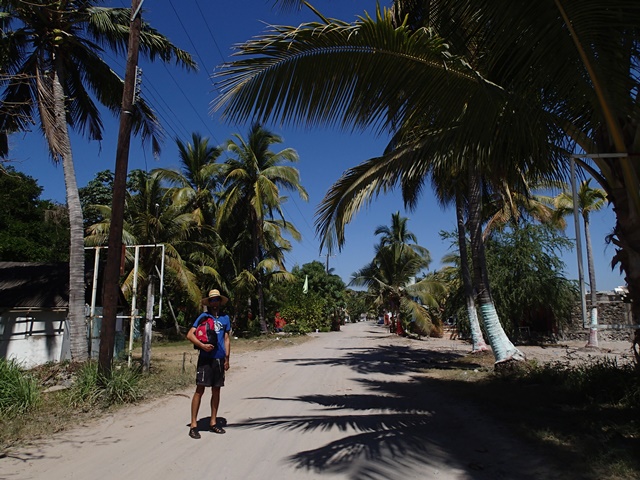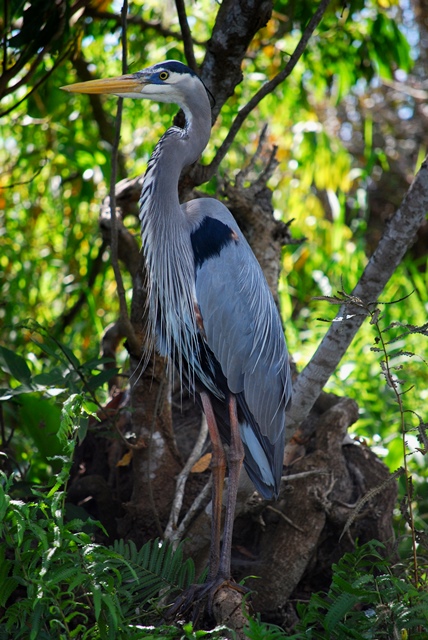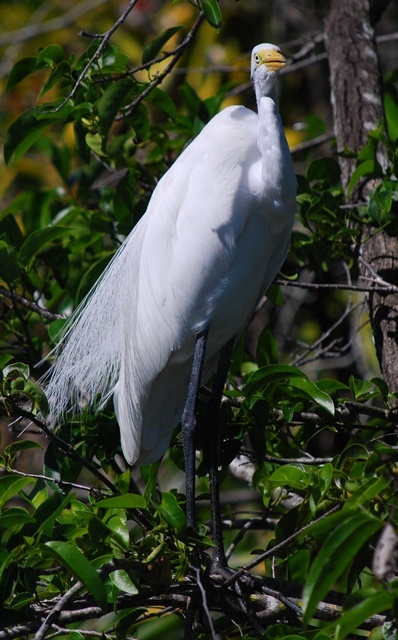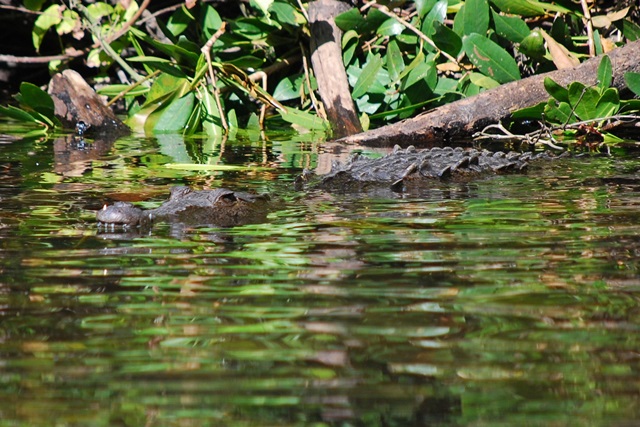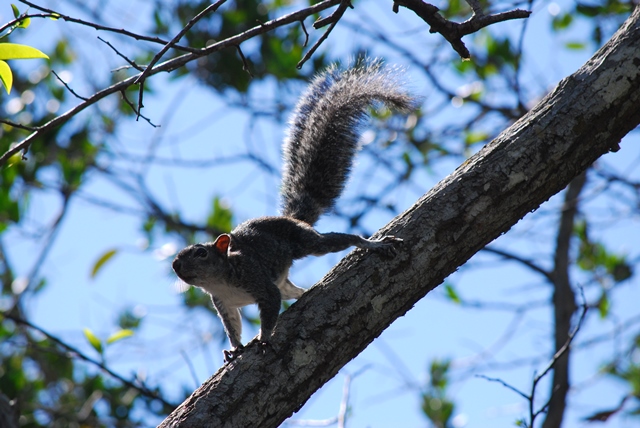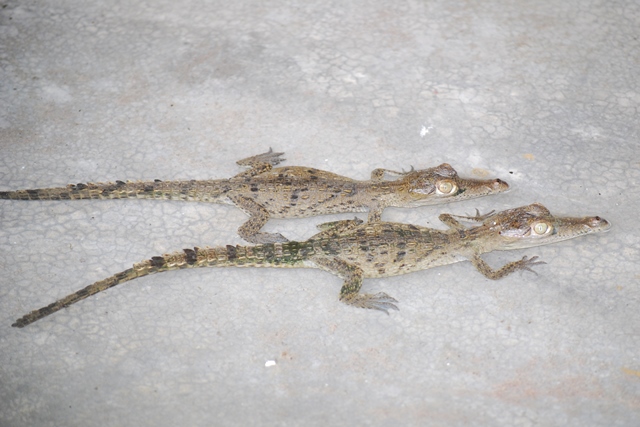San Blas
|
Time period: Wednesday, 3/12/14 - Friday, 3/14/14 After departing Isla Isabel, we stopped at San Blas for a couple days: Welcome To The Jungle! |
"The Bells of San Blas" is a famous poem by Henry Wadsworth Longfellow inspired by the removal of the aging bells from the old church in San Blas, but this was not the main reason for us to stop here. It was rather the "Welcome to the Jungle" (by Guns N' Roses) experience we were seeking in San Blas, since this is our first stop in Pacific Mexico with a year round hot climate and lush green tropical vegetation. Sailing from Isla Isabel to San Blas was quite nice, we had our spinnaker up and enjoyed a downwind run for most of the way. However it took us a little longer than planned and we approached San Blas after sunset. Instead of attempting the tricky entrance to the San Blas estuary with its ever shifting sandbars in the dark, we continued a couple miles south into Ensenada de Matanchén. After dodging a few very badly lit fishing pangas, we finally dropped the hook in the calm bay.

Flying our green and yellow spinnaker sail on our way to San Blas from Isla Isabel.
Anchored in Ensenada de Mantanchén.

A panorama view of Mantanchen Bay. The lush green mountains surrounding this bay are gorgeous. And yes we know this image is too long for the blog, but it's too beautiful to cut :-)
The next day we rowed Lil’ Panther (our dinghy) to shore; we walked along the beach and admired the palapas (little beach huts made out of sticks and covered with dried palm leaves), caught a taxi to town and explored San Blas. It's hard to believe that this sleepy little town was once the main Pacific port of New Spain, but after the Spanish- Mexican war in 1810 San Blas went into decline and today the population is about a third compared to its heyday.
The old church next to the new church in San Blas.

A sign on the old church shows an excerpt of "The Bells of San Blas".
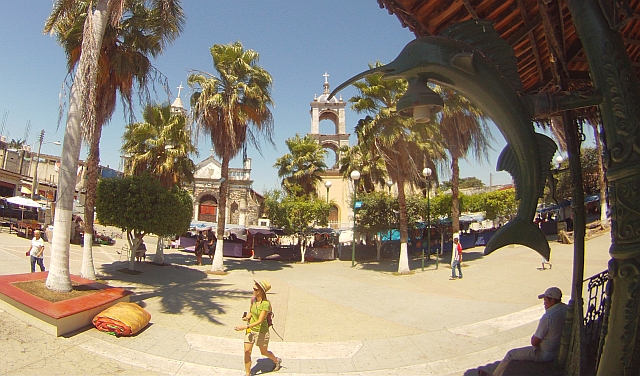
The main square with the old church (in the left background), the new church (on the right) and a tourist from Green Panther in the middle.
.
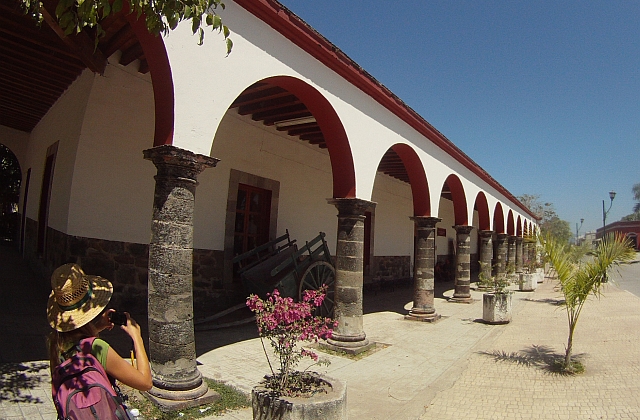
Alena taking a picture of the cultural center which houses an exhibition of old photographs of San Blas.
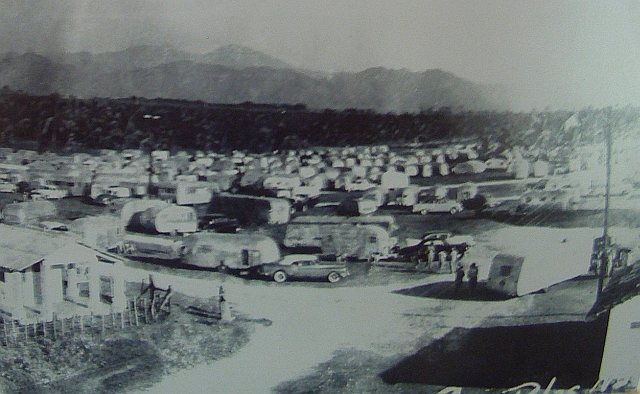
One of the more curious photographs in the cultural center titled "Primera caravana de trailleres norteamericana, San Blas 1950."
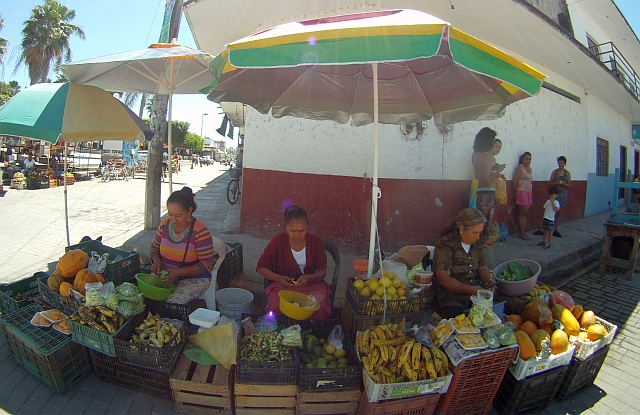
Las tres mujeres - market in downtown San Blas.
After exploring the town for a few hours, we stopped for lunch at McDonalds. Yes, that's right we came all the way to San Blas to eat at McDonald’s and we enjoyed it a lot. Delicious carne asada tacos and tostadas con pollo with a cold beer - yeah that's McDonald’s in Mexico! And there is no relation to a certain fastfood chain – the owner’s last name just happens to be McDonald. :-) Later in the evening we returned to Mantanchen Bay and enjoyed a cold cerveza and a light snack at one of the beach palapas. However, close to sunset we got to experience one of the things San Blas is famous for besides the Longfellow poem, the jejenes (aka no-see-ums). One of the reasons we heard San Blas was not successfully developed into a mega resort community is the bugs. This is perhaps a blessing in disguise because it has preserved a beautiful area. The locals burn coconut husks in the evenings to try and keep the biters away though, so the whole area smells like a giant campground.

Alena enjoying her meal and free internet at McDonalds.
Chris relaxing in a hammock at one of the beach palapas after our day exploring San Blas.
Burning coconut husks to keep away the no-see-ums.
We couldn’t leave San Blas without checking out the jungle (the reason we came), so the next day we hiked a mile up the road to the nearby river Rio Tovara and signed up for the jungle tour in a panga. For a very reasonable 150 pesos (~$11.50), we got a 2 hour tour up the river through mangroves and jungle where we got to see lots of birds, crocodiles and turtles. We also made a stop at a crocodile sanctuary where they breed the crocodiles and eventually release them into the river. The Mexican crocodile population has been in decline for several decades due to habitat loss and hunting; now there are several conservation efforts to bring their numbers back up.
Hiking up the road to Rio Tovara.
An anhinga, or snakebird (Anhinga anhinga) we spotted in the jungle.
A familiar face in the jungle (great blue heron), but this time with his breeding plummage (see the fine feathers hanging off his neck).
Another familiar face (great egret) with breeding plummage.
A mexican crocodile cooling off in the water. Not a good place to go for a swim!
Another crocodile, perhaps waiting for his next meal to arrive (or just sunning himself).
A turtle sunning himself on a log.
A jungle squirrel.
Baby crocs at the crocodile sanctuary.
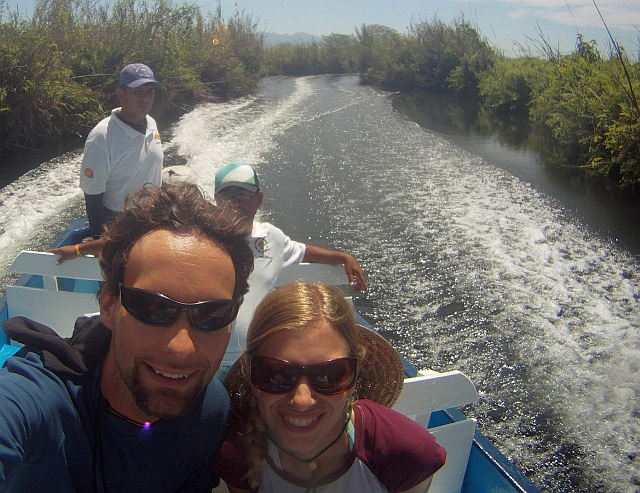
Speeding back on the panga after the tour.
Despite thoroughly enjoying our time in San Blas, we needed to keep moving to make it to our final destination, Puerto Vallarta. In Puerto Vallarta we will finish the last of our boat projects before heading across the Pacific to the Marquesas.
Hits: 7700
